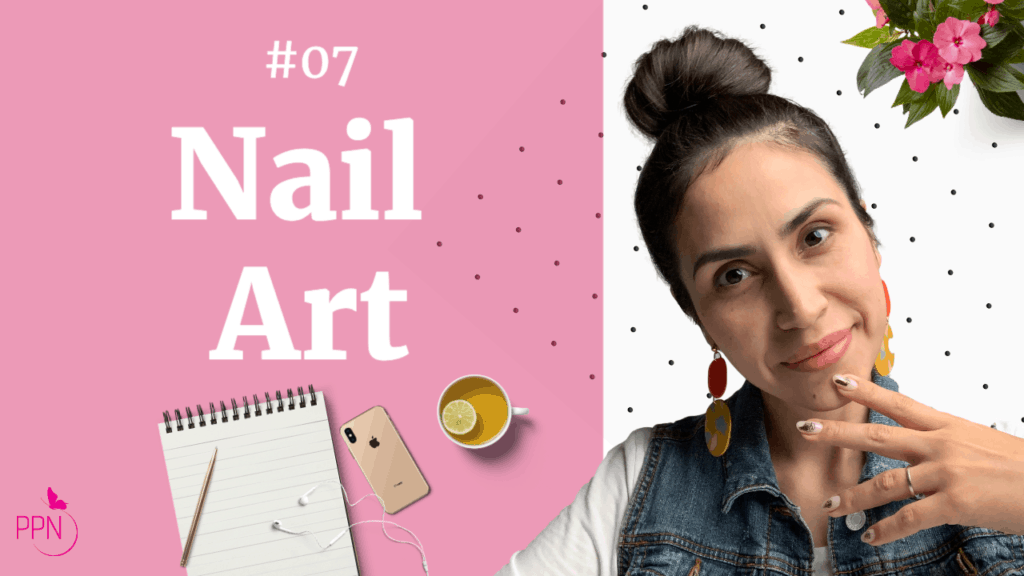So you’re either fully committed or very curious about giving Japanese Gels a go.
Where do you start? What base coat & top coats will be the most universal to use across the board with clients? What if you don’t currently have the budget for it all? I get you.
Today, I’m going to try and get you to the basics of basics when it comes to getting started with soft potted gel, like Japanese gel.
I’ll share the 3-must-buy clear gels to get started with Japanese gel. And I’ll be referencing my three go-to Japanese Gel Nails brands to do so… Kokoist, Leafgel, and Vetro. By the way, you can use code PPN10 for a 10% discount at Kokoist and Leafgel ;).
I promise you; you’ll be set to offer gel manicure services with these suggestions, even if you haven’t invested in colors. And don’t worry, my top 10 colors to get started with each of these brands I’ll discuss in next week, so hang tight. It’s coming!
And because I’m staying traditional, I’ll primarily be making potted gel suggestions, so we’ll also need to pick up some brushes. I have 3 must-have recommendations for those.
So grab a sip, pen, and paper and cozy up with me to Episode #02 of this Japanese Gel Nails Fundamental Series.
Let’s do this!
About 8 years ago, I started doing nails as an independent stylist with just one client. And, after much trial-and-error, and my fair share of sweat, pain, and tears, I achieved booked-solid success before moving on to the next chapter in my life.
I now help the next generation of nail techs be booked with only the clients, products, and services that excite you the most while helping you claim your slice of the online pie selling products.
Now on to today’s topic.
One of the many winning points of using Japanese Gel systems for your salon services is that they do not require a primer or dehydrator. Your dehydration is taken care of when you scrub the natural nails with alcohol, and the bonding agent is found all in your gel base product.
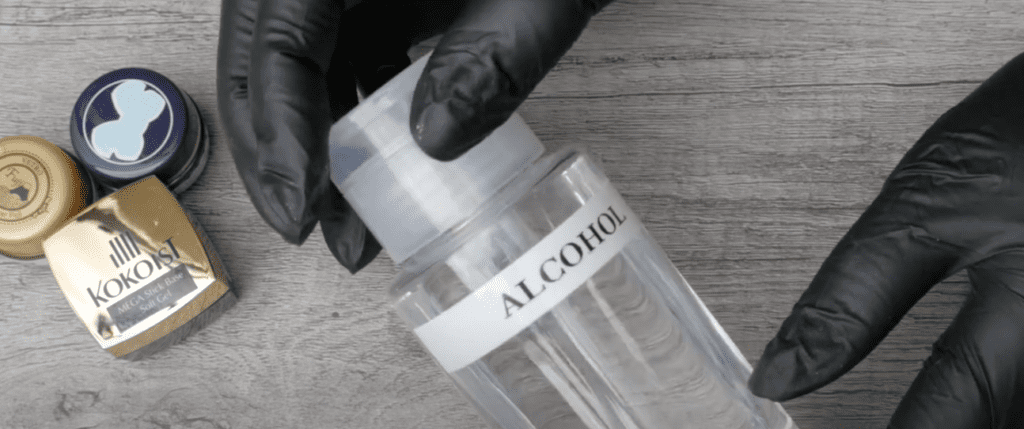
Omitting these prepping agents saves you time and money. It decreases the dehydration of your client’s natural nails, helping her achieve those natural nail goals.
Let’s start with our clear gels. Clear gels are oh-so-important. They lay out your foundation and finish off your gel nails. Be selective, but also try a few out.
My rule of thumb for ease is to stick to one brand of clear gels for 1-3 months and feel it out on you and all of your clients before trying another one. This way, you give each brand of clear gels a truly fair shot while also keeping yourself out of troubleshooting service breakdowns.
Japanese Clear Gel must-have #1
A thicker consistency and flexible base gel.
In the Vetro brand, it is Fuji base; in the Leafgel brand, it is Extreme Clear; in Kokoists, it’s Mega Stick Base.
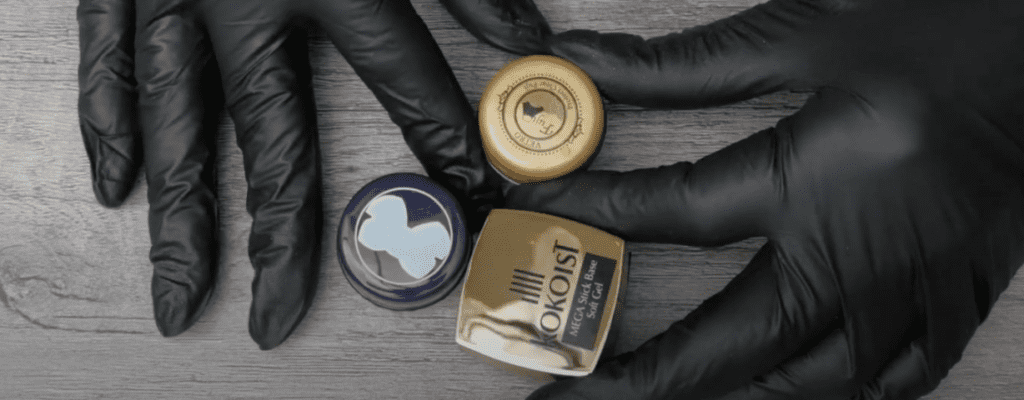
The reason why this thicker consistency base gel is so important is that it will provide natural nails with flex power. Most client nails, if not all, have some level of flexibility. A base gel bends with the natural nails will be less likely to chip and/or lift from the natural nail.
Out of the 3, Extreme Clear by Leafgel is the thinnest, while Kokoist is the most viscous, Vetro being in the middle.
Before applying any of these base gels, cleanse the natural nails with 90% alcohol. The less water content in 90% alcohol ensures perfect adhesion. I know some of you have a blend of acetone and alcohol-based cleansers. While that is perfect for acrylic and hard gel wear, soft potted gel systems like Bio Sculpture and Japanese Gel rely on the natural nails being able to recover their moisture so that they can work together with the gel and flex with it.
Acetone strips the natural nail more dramatically of moisture and its ability to re-moisturize itself than alcohol. And this is important because the natural nail and soft potted gel formulas are literally the dynamic duos, the dream team of achieving healthy and strong natural nail goals. If the natural nails become too dry, they will become too rigid, meaning less flexible. So not only will they become brittle but also hard, and now they will not match the flexibility of the soak-off gel and will separate from it and start lifting.
This will be the beginning of the end for your or your client’s natural nail goals. It really is a downward spiral from there on. So again no need for a pH bonder or dehydrator. Yes, they will adhere the gel super strong, but A) If you intended to soak off that gel, that no longer will be a possibility, and B) 2-3 months down the line, you’ll be wondering why those natural nails don’t look or feel as strong any more, and sadly this is where a lot of ppl and clients go blaming gel nails for the damage of their natural nails.
And if you are an independent stylist relying on returning clientele for that steady, reliable monthly income, prevention is vital. Do your part to avoid dehydration to the nails.
Should you have a rare case of a problem-lifting client, there is no harm in applying a bonder at the free edge or cuticle area, as these are the 2 most problematic lifting areas.
Japanese Clear Gel must-have #2
A soft gel builder. Now when I say soft gel, I mean soak-off gel. I am not referring to the gel’s firmness being soft as in bendy or rigid. Japanese soft gel builders are super strong. Yes! Using Japanese builder gel, you can create extensions, including free-form soft gel extensions. They are that strong. Their texture is rigid and semi-hard, yet able to dissolve in acetone, unlike hard gel.
I’ve done many free-form-soft gel extensions, which is a key section in Japanese Gel Nail Training. Soft gel builder or soak-off gel builder extends lengths on natural nails. Still, you have to be super methodical.
Ok, so Kokoist’s soak-off builder is called Excel Builder, Leafgel’s is called Sculpting II, and Vetro’s is called Extension Clear. You can’t go wrong with any of these… and you’ll use these over any of the flexible bases we mentioned earlier for long wear. For years, I’ve gravitated more toward Vetro’s Extension Clear. My trainer told me it was construction grade. I guess my second favorite is Leafgel’s, and then Kokoist’s. Kokoist is especially good if you’re transitioning from hard gel to soft potted gel formulas. I think Kokoist Excel Builder merges that bridge for a smooth transition. It feels “glassy” when filing, just like hard gel does.
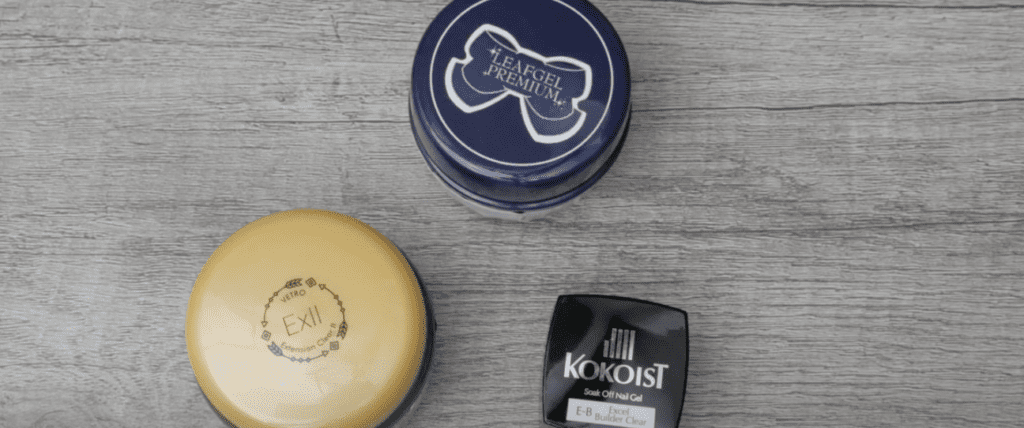
Japanese Clear Gel must-have #3
Top Gel! But wait, Potted or Bottled?! Here is just about the only time I’ll stray away from potted gel, here and when working on toes. Often, nowadays, at least, we are doing some nail art on clients or ourselves… and so if you are in a peach, then you want what is quick without compromising quality. This is when you would cheat and reach for your bottled top gel. Now my favorite top gel is from Kokoist, and here is why.

Two reasons… #1, Its viscosity, and #2, it is non-wipe… let’s start with the latter… it being non-wipe. Well, if you’re pressed for time, the last thing you want to do is add an unnecessary step to your service by having to wipe off an inhibition layer. I know it sounds like no biggie… but saving 2 minutes is 2 minutes when you’re already 1o mins behind.
And the first reason I mention is viscosity. Unlike most non-wipe top gels I’m familiar with, Kokoist is slightly thicker, so it will hide any tiny imperfections from your final look. The thinner your finishing gel is, the more it will enhance those imperfections.
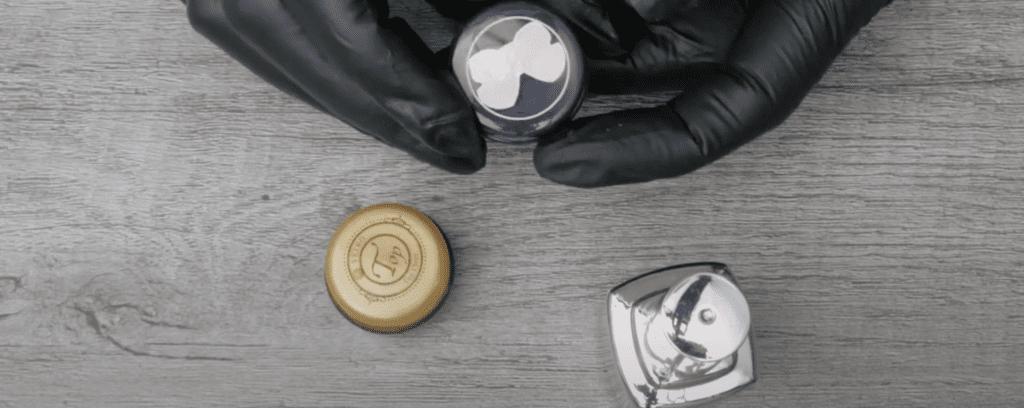
With that being said, self-leveling out any tiny imperfections is one of 2 reasons why you may want to take the time to use a potted gel top coat. The second is that it will generally add a tiny bit of strength to your application. So if you desire more strength or your natural nails need it, please use a potted top gel coat.
By the way, Kokoist does not offer a potted top gel, at least not in the US, and Vetro’s is just fine for me; nothing to write home about, but I never really used it a lot either. My favorite potted top gel is from Leafgel. Its name is Perfect Shine, and it is super resistant to scratching if you are a little bit more aggressive when removing the tacky layer from your gel nails. The other top gel rule-of-thumb is never to apply your top gel thick, or it will lose its clarity. And guess what! Perfect Shine by Leafgel was also designed to be forgiving. If you happen to apply thick, it will not lose its clarity.
I think Vetro’s current Non-wipe is being re-formulated, and they do offer a potted top gel. Still, again I never used it enough to give you back feedback. Using their Extension Gel as a top gel is also pretty cool, as it adds strength and a high gloss finish. Avoid contaminating it so that you maintain its clarity.
Now because we mainly geeked out about potted gel, I told you also I’d help you with some brush recommendations.
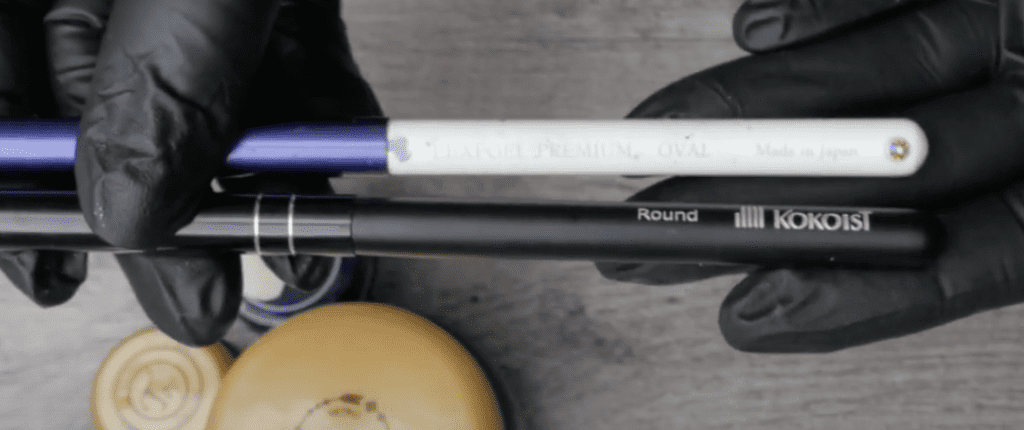
Here is how I assign my brushes.
- One for base gel.
- One for builder gel.
- One for top gel.
A Square or round shape is totally your preference. I have always preferred a round one, though. I also don’t like my bristles to be too long. Unless you’re constantly working on long nails, you’ll likely prefer shorter bristles.
My two current go-to’s are Leafegel’s Oval and Kokoist Round. (P.S. You can use code PPN10 for a 10% discount on both brands ;))
However, I often get asked what a good starting set of brushes is, and I believe Vetro’s six brushes are a great start. You’ll have a brush for every need. They have a brush called Max that was designed for their sanding-free base by the name of Max Base, and I don’t necessarily recommend that base for all of your clients, so I would switch that brush use for colors. It applies them so smoothly.
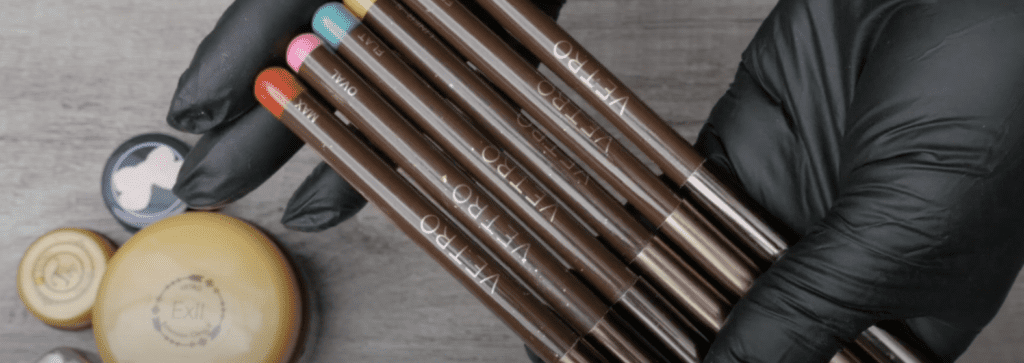
I hope you were taking notes, but if you didn’t, no worries. You can always revisit this blog or the Youtube Video. I’m all about clarity, so I created a comparison chart for you to download with all of the gels I mentioned in this video. You can download it HERE.
Thank you again for joining me in this 2nd Japanese Gel Nails Series episode. I’ll see you next week for Episode 3. I have already mapped out these episodes, and we have a current total of 8 lessons, which should take us through April.
Thank you so much for joining me again, and I’ll see you next week!
Loved this blog? Then I think you’ll love learning more about my journey as a specialized gel nail solopreneur in the nail industry. Click here to get instant access to my free training. These blogs are copyrighted material, and any use of this blog is not permitted without written concern first. Some of these blogs contain affiliate links that give us a small commission when qualifying purchases are made. Thank you for being so supportive, which helps us continue creating valuable resources and content like this.

![Prep Products You Need For Japanese Gel Nail Application [Japanese Gel Fundamentals Series #05]](https://paolaponcenails.com/wp-content/uploads/2021/04/social-media-banner-design-with-donuts-copy-copy-copy-1024x576.png)
